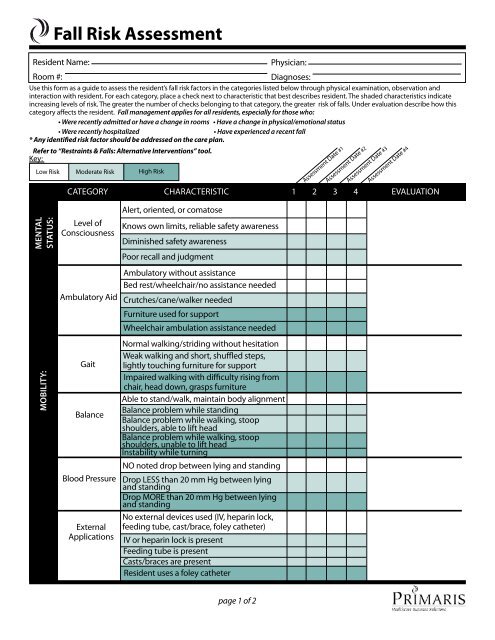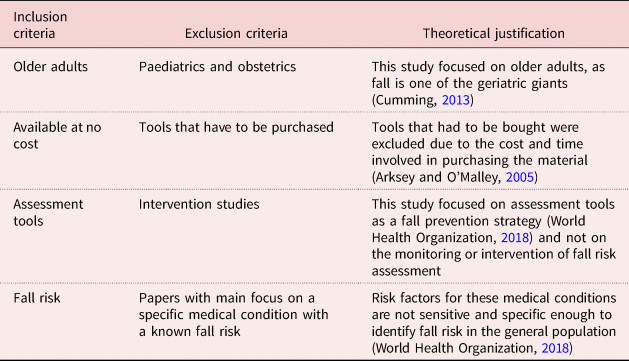Things about Dementia Fall Risk
Things about Dementia Fall Risk
Blog Article
How Dementia Fall Risk can Save You Time, Stress, and Money.
Table of ContentsLittle Known Facts About Dementia Fall Risk.Rumored Buzz on Dementia Fall RiskDementia Fall Risk Can Be Fun For EveryoneThe Only Guide to Dementia Fall RiskThe Dementia Fall Risk PDFs
The FRAT has three areas: drop danger standing, danger aspect checklist, and activity strategy. A Loss Danger Status includes data about background of current drops, medications, mental and cognitive standing of the individual - Dementia Fall Risk.If the client ratings on a risk element, the equivalent variety of factors are counted to the patient's fall threat rating in the box to the far appropriate. If a client's autumn danger rating amounts to 5 or greater, the person is at high threat for drops. If the patient scores only four points or reduced, they are still at some threat of dropping, and the nurse must use their finest medical assessment to take care of all loss threat factors as part of a holistic care plan.
These conventional techniques, in basic, help create a safe atmosphere that reduces unintended falls and marks core preventive steps for all patients. Indications are vital for individuals at threat for drops.
Facts About Dementia Fall Risk Uncovered
As an example, wristbands need to include the client's last and given name, day of birth, and NHS number in the UK. Details ought to be printed/written in black against a white background. Only red color ought to be utilized to indicate special patient condition. These referrals are consistent with current advancements in patient identification (Sevdalis et al., 2009).
Items that are also much may need the person to get to out or ambulate needlessly and can potentially be a threat or add to drops. Assists stop the person from going out of bed without any type of support. Registered nurses react to fallers' telephone call lights faster than they do to lights launched by non-fallers.
Visual impairment can greatly cause drops. Hip pads, when used properly, might minimize a hip fracture when fall takes place. Keeping the beds closer to the floor minimizes the danger of falls and significant injury. Putting the mattress on the flooring significantly lowers autumn risk in some medical care setups. Low beds are designed to decrease the distance a client falls after relocating out of bed.
Dementia Fall Risk for Dummies
Individuals that are high and with weak leg muscles that attempt to remain on the bed from a standing setting are likely to drop onto the bed due to the fact that it's too reduced for them to reduce themselves safely. Likewise, if a high patient attempts to stand up from a reduced bed without aid, the patient is likely to fall back down onto the bed or miss the bed and fall onto the floor.
They're developed to promote timely rescue, not to stop falls from bed. Audible alarms can also remind the patient not to stand up alone. The use of alarms can likewise be a replacement for physical restrictions. Apart from bed alarm systems, raised guidance for high-risk clients likewise may assist stop falls.

Individuals with an evasion gait boost autumn chances drastically. To minimize autumn danger, shoes must be with a little to no heel, slim soles with slip-resistant step, and sustain the ankles. Recommend client to make use of nonskid socks to prevent the feet from gliding upon standing. Urge individuals to use suitable, well-fitting shoesnot nonskid socks for ambulation.
Dementia Fall Risk Fundamentals Explained
Individuals, especially older grownups, have reduced aesthetic capability. Lights an unknown environment assists enhance visibility if the person must obtain up in the evening. In a research, homes with appropriate lighting report less drops (Ramulu et al., 2021). Enhancement in lighting in the house may minimize loss rates in click older grownups (Dementia Fall Risk). Using gait belts by all healthcare companies can promote safety and security when helping people with transfers useful source from bed to chair.

Sitters work for ensuring a safe and secure, protected, and safe atmosphere. Researches showed really low-certainty evidence that sitters reduce autumn risk in acute treatment medical facilities and only moderate-certainty that options like video clip tracking can decrease sitter usage without increasing fall danger, suggesting that sitters are not as useful as initially believed (Greely et al., 2020).
More About Dementia Fall Risk

Increased physical conditioning lowers the danger for falls and restricts injury that is sustained when loss transpires. Land and water-based exercise programs might be in a similar way helpful on balance and stride and consequently reduce the risk for drops. Water exercise might contribute a favorable benefit on equilibrium and stride for women 65 years and older.
Chair Increase Workout is a straightforward sit-to-stand exercise that helps reinforce the muscle mass in the upper legs and buttocks and boosts movement and independence. The this post objective is to do Chair Rise workouts without using hands as the client comes to be stronger. See resources section for a detailed instruction on exactly how to do Chair Rise workout.
Report this page